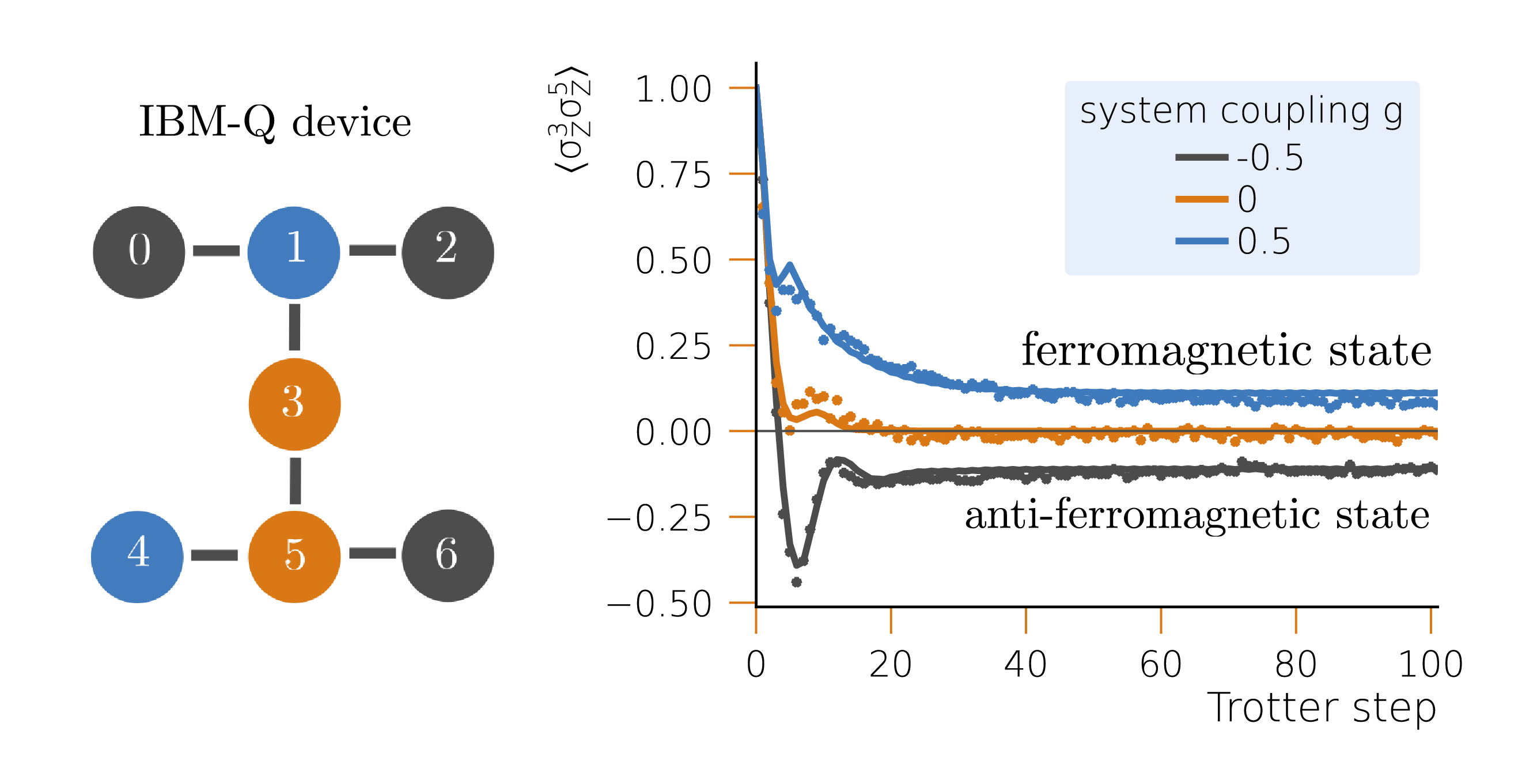Introduction
The HQS Noise App offers a novel approach to mapping problems from diverse fields such as chemistry, materials science, and other quantum mechanical problems onto a quantum computer. What sets the HQS Noise App apart is its scalable approach to quantum simulation based on simulating time evolution.

This approach is designed for the simulation of mixed systems, e.g. spins coupled to fermions or bosons, which can be relevant for effects like light-matter interactions or microscopic vibrations in materials. It also provides novel capabilities for applications such as quantum machine learning. While the HQS Noise App is primarily tailored to NISQ devices, its relevance and significance extend to the era of fully error-corrected quantum computing. The Phase estimation algorithm, a key component for conducting quantum simulations on error-corrected quantum hardware, is based on the principle of time evolution. This principle is the cornerstone of the HQS Noise App, highlighting its continued importance in quantum computing.
Applications
The HQS Noise App can be used from two different perspectives:
- To derive effective noisy algorithm models to gain insight into the effects of noise during circuit execution.
- To use the noisy algorithm model to create optimized system-bath quantum circuits to simulate an open quantum system of interest on a noisy quantum computer.
The theoretical foundations of this software package have been published in two arxiv papers:
For a detailed scientific discussion we refer the reader to the arxiv papers. This User Guide provides a concise summary of the fundamental physical concepts and an introduction to the Python interface of this software package.
Getting Started
First, HQStage has to be set up on the local machine (see the HQStage documentation for details).
The HQS Noise App can then be installed via the HQStage CLI tool with the following command
hqstage install hqs-noise-app
On the examples page, we show example analyses of several small-scale systems using the HQS Noise App. For more examples, see also our IPython notebook examples distributed along with the HQS Noise App.
Features
A changelog starting from version 0.5 can be found see here.
The Python API documentation can be found here.
Fundamental Physical Concepts
Noise Models
We consider physical noise, i.e. noise at the hardware level, caused by the coupling of qubits to some fluctuating environment, either during control operations or at all times. This is assumed to cause damping, dephasing, and/or depolarisation of their quantum states. Our model of a noisy quantum computer is based on the addition of corresponding non-unitary (noise) operations after or before (ideal) unitary gate operations. This model is described in detail in the modeling section.
Noise Mapping
The first use of the HQS Noise App is to investigate how noise affects the gate-based quantum simulation of noiseless systems. Particularly, it solves the Lindblad open-system model that the noisy quantum hardware is effectively running. The foundations of this mapping (between physical and simulated noise) are discussed in the mapping section or in more detail in this arxiv paper. The mathematical derivation shown may be somewhat cumbersome in some places, but luckily the mathematics of connecting physical and effective noise for arbitrary quantum algorithms is done automatically by the HQS Noise App.
The System-Bath Approach
The second functionality of the HQS Noise App is to design system-bath quantum circuits to simulate an open quantum system of interest with the help of the physical noise on a quantum computer, thus turning parts of the noise on the device into a resource for computation by matching them to the dynamics of the studied bath. The basis of the system-bath approach is discussed in the system bath section of this user guide or in the arxiv paper.